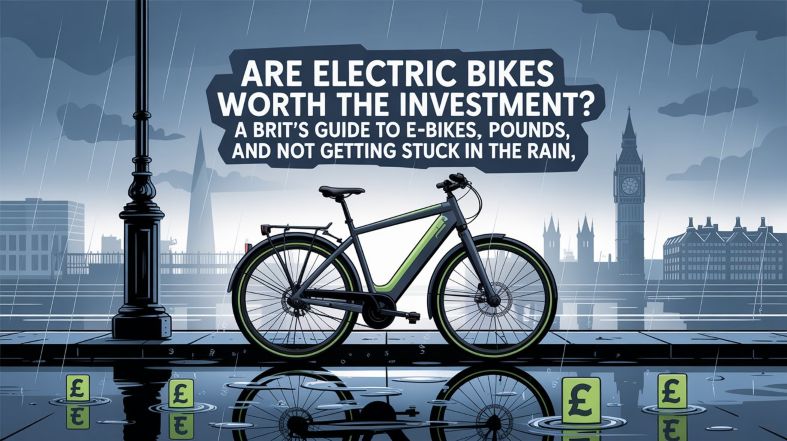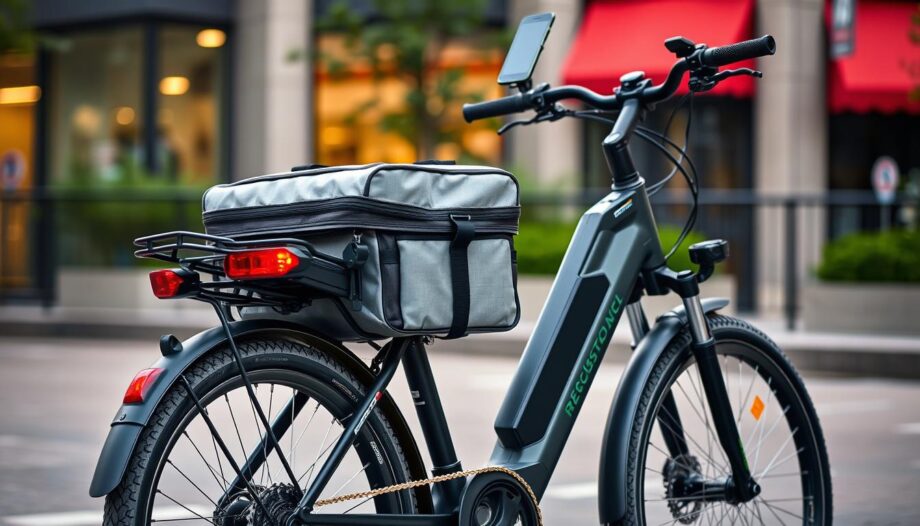To help you navigate these complexities, we’ve dug deep into not only the data but also real-world scenarios. Our aim is to provide you with actionable tips that go beyond basic specs and dive into everyday usage. From measuring battery capacity under various conditions to understanding how different factors like speed and temperature can tweak performance, we’ve mapped out everything you need to maximize your e-bike rides. Whether it’s estimating the discharge rate using a specialized formula or employing a device to monitor current levels while riding, we cover all essential aspects.
Instead of creating a run time calculator, I created a table with the most popular battery voltage and ampere-hours, you can quickly scan it to see your average battery run time if you were running in top setting or using maximum power.
You can also do a basic range calculation or runtime duration estimate on how long your ebike battery will last per ride. For example, you have a 624-watt battery and you have a 250-watt bike, so if you were using the maximum setting on the bike you could say, if you are just trying to calculate the range of your ebike you can do that here.
624 watts battery divided by 250 motor watts = 2.4 hours
You can use our calculator here, if you are looking to calculate your range go here
Runtime Calculator
36V Batteries
| Battery (V & Ah) | Battery Capacity (Wh) | Run Time (hours) |
|---|---|---|
| 36V, 7.8Ah | 280.8 | 1.12 |
| 36V, 9.6Ah | 345.6 | 1.38 |
| 36V, 10Ah | 360 | 1.44 |
| 36V, 14Ah | 504 | 2.02 |
| 36V, 17Ah | 612 | 2.45 |
48V Batteries
| Battery (V & Ah) | Battery Capacity (Wh) | Run Time (hours) |
|---|---|---|
| 48V, 10Ah | 480 | 1.92 |
| 48V, 13Ah | 624 | 2.50 |
| 48V, 15Ah | 720 | 2.88 |
| 48V, 16Ah | 768 | 3.07 |
| 48V, 19Ah | 912 | 3.65 |
| 48V, 20Ah | 960 | 3.84 |
| 48V, 22Ah | 1056 | 4.22 |
52V Batteries
| Battery (V & Ah) | Battery Capacity (Wh) | Run Time (hours) |
|---|---|---|
| 52V, 10Ah | 520 | 2.08 |
| 52V, 13Ah | 676 | 2.70 |
| 52V, 16Ah | 832 | 3.33 |
| 52V, 19Ah | 988 | 3.95 |
| 52V, 20Ah | 1040 | 4.16 |
| 52V, 22Ah | 1144 | 4.58 |
If you are just looking to calculate the range of your electric bike, you can do that here using our advanced range calculator.
Understanding how long an e-bike battery will last before needing a recharge is crucial for planning your rides. Several key metrics are used to gauge battery capacity and endurance, providing riders with valuable insights for managing their biking activities.
Measuring Electric Bike Battery Life
One of the primary indicators to consider is amp-hour (AH) rating. This metric signifies the amount of energy a battery can deliver throughout one hour. The higher the AH rating, the greater the potential range a battery can provide. For instance, a 48V 13AH battery paired with a 250-watt motor can deliver continuous riding for 2.5 to 3 hours at full throttle, covering a distance of over 40 miles. Riders who prioritize longer rides should seek out e-bikes with higher AH ratings to accommodate their needs.
In addition to amp-hour ratings, the voltage of an e-bike battery plays a significant role in determining ride times. A higher voltage battery provides more power to the motor, enhancing its overall performance.
Furthermore, another crucial measure that comes into play is watt-hours (Wh). This metric combines both voltage and amp-hours, offering a more comprehensive insight into energy storage. Higher watt-hours reflect increased energy reservoirs within a battery, translating to longer runtime.
To truly understand an electric bike battery’s capacity in real-world scenarios, practical measurements become invaluable as they ensure riders gain accurate insights into their specific battery’s performance under various environmental and terrain challenges.
It’s important for riders to recognize that published statistics are general estimates and may not accurately reflect individual riding habits or conditions. By gauging performance based on individual riding behavior, riders can make informed decisions about their e-bike usage and plan excursions more effectively.
By considering these measures and understanding the intricate details behind electric bike batteries’ capabilities, riders can make well-informed decisions regarding their e-bike usage and effectively manage their riding experiences. Utilizing a device, such as a specialized calculator, can help in making these estimations more precise and user-friendly.
Now equipped with a comprehensive understanding of how electric bike batteries operate and perform, let’s dive into the factors that significantly affect the longevity of these vital components.
Riding your electric bike through different landscapes can significantly impact the battery’s lifespan. Terrain and Rider Weight: When navigating steep inclines or carrying heavy cargo, the motor works harder, draining more power from the battery. This substantially reduces the battery’s runtime. Conversely, riding on flat terrain with lighter loads extends the battery’s runtime, enabling longer travel distances without the need for frequent recharging.
Factors Affecting Battery Longevity
In addition to terrain, another factor strongly correlated with battery lifespan is speed and riding style.
Consistent high speeds and aggressive acceleration rapidly deplete the battery, compared to riding at moderate speeds with gentle acceleration. It’s akin to driving a car: fast driving and sharp acceleration increase fuel consumption. The same principle applies to e-bikes; riding at moderate speeds with smooth acceleration conserves energy, thereby extending the battery life. With advancements in technology, many e-bike batteries are now rechargeable and designed to be more efficient.
Another key aspect directly influencing battery efficiency is temperature extremes. Both extreme cold and heat can impair battery performance. Ideally, lithium-ion batteries operate most effectively within a range of around 60°F to 77°F (15°C to 25°C). Outside this temperature range, such as during scorching summer or freezing winter days, the battery tends to lose efficiency. Extreme temperatures cause the internal resistance of the battery to increase, leading to quicker drainage and reduced runtime. Ensuring that your e-bike’s battery is stored and used within these temperature limits will help maximize its longevity. Some advanced models even come with portable electronics to monitor and analyze temperature variations.
The motor efficiency also significantly impacts the lifespan of your e-bike battery. Opting for a higher efficiency motor can result in less power consumption, effectively prolonging the life of the battery. For instance, a 250-watt motor generally achieves a balanced performance-to-range ratio. Choosing a motor with adequate power output for your specific riding needs can help optimize the usage of your e-bike’s battery, and technology advancements now allow for systems that can monitor and analyze motor performance in real-time.
By paying attention to these factors affecting electric bike batteries, riders can actively take steps towards maximizing their e-bike’s performance and extending its overall lifespan. Always having a backup plan, such as an extra rechargeable battery or portable charger, can add an extra layer of convenience and reliability.
Now, let’s dive deeper into actionable tips for maintaining and optimizing the runtime of your electric bike battery.
As riders, we all strive to get the most out of our electric bike batteries. By taking a few simple steps, we can maximize our ride time and get the most value from our e-bike investment. Modern technology also offers several solutions for monitoring and optimizing battery health.
Extending Battery Run-time
As riders, we all strive to get the most out of our electric bike batteries. By taking a few simple steps, we can maximize our ride time and get the most value from our e-bike investment.
If you are looking for ways to preserve your battery you can find tips here.
Optimize Pedal-Assist Levels
One effective way to prolong your e-bike’s battery life is to use lower pedal-assist levels whenever possible. Higher levels of assistance draw more power from the battery, leading to quicker depletion. By opting for a lower assist level, you can conserve energy and extend your ride time without compromising on comfort or speed. It’s like finding that sweet spot where you can enjoy a smooth, effortless ride while ensuring your battery lasts as long as possible. Advanced electronics can even help monitor energy consumption at different pedal-assist levels.
Proper Tire Inflation
Another crucial aspect of maximizing battery efficiency is maintaining proper tire inflation. This simple maintenance task helps reduce rolling resistance, which in turn conserves battery power. By checking and adjusting tire pressure according to the manufacturer’s recommendations regularly, riders can ensure optimal performance and contribute to longer battery life. It’s like making sure your wheels are perfectly aligned for an extended adventure.
Minimizing Weight
Every extra pound adds strain to your e-bike’s motor and draws more power from the battery. To minimize power consumption and extend your battery runtime, consider removing unnecessary items from your bike. Lightening the load reduces the demand on the motor and enhances overall efficiency, enabling you to travel farther on a single charge. It’s like lightening the load for a hiker embarking on a challenging trek; every ounce matters when it comes to endurance.
Smooth Acceleration
Sudden starts and stops demand more power from your e-bike’s motor. Choosing smooth, gradual acceleration over abrupt bursts not only contributes to a more enjoyable riding experience but also enhances energy efficiency. By adopting this technique, riders can substantially extend their electric bike’s battery runtime and make the most of each adventure without worrying about premature depletion. It’s like learning to drive steadily and predictably, optimizing fuel efficiency while ensuring a comfortable journey for everyone aboard.
Implementing these practical tips can go a long way in maximizing the runtime of your electric bike battery, allowing you to enjoy longer rides with confidence and peace of mind.
Now, let’s discover how charging solutions play a pivotal role in enhancing overall e-bike performance and convenience. Having a reliable rechargeable system is crucial, and the ability to analyze the health and efficiency of the battery through advanced electronics can offer significant benefits.
Now, let’s discover how charging solutions play a pivotal role in enhancing overall e-bike performance and convenience, obviously, these are more powerful modern batteries compared to the old lead acid batteries of old.
How does the battery running time differ between different models or brands of electric bikes?
The battery runtime can vary significantly between different models and brands of electric bikes. This is primarily influenced by factors such as battery capacity, motor efficiency, and the overall power consumption of the bike. Higher-end models with larger battery capacities tend to have longer runtimes, while cheaper or lower-quality bikes may have shorter runtimes. For example, a study conducted in 2023 found that top-tier electric bikes had an average battery runtime of 50-70 miles on a single charge, while lower-tier models averaged around 20-30 miles. However, it’s important to note that these statistics are subject to change as technology continues to improve and new models are introduced. To get the most out of your electric bike battery, implementing tips and techniques for extending its runtime is crucial.
Are there any tips or tricks for maximizing the battery runtime on an electric bike?
Yes, there are several tips and tricks for maximizing the battery runtime on an electric bike. First, avoid using the highest power assist levels unless necessary, as higher levels consume more battery power. Second, keep the bike well-maintained, checking tire pressure and ensuring gears are properly adjusted, as this reduces energy expenditure. Third, try to maintain a consistent speed and avoid frequent acceleration or braking, which can drain the battery faster. Finally, consider using pedal-assist mode instead of relying solely on throttle, as it conserves energy. According to a study by Battery University, following these practices can extend battery runtime by up to 30%.




